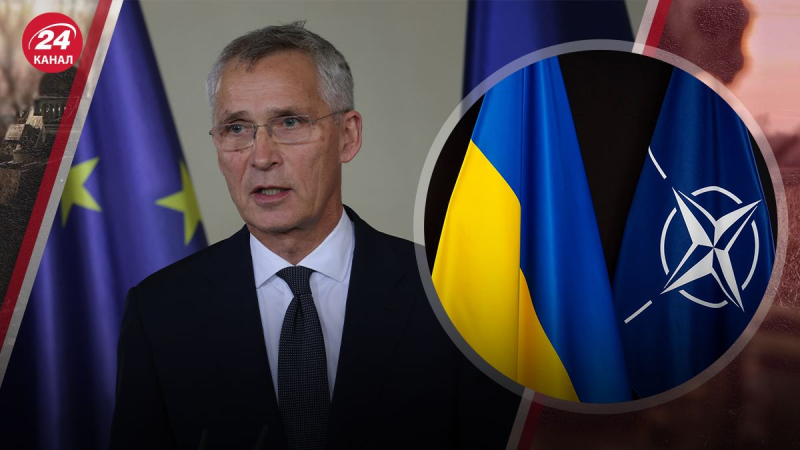Ministers of Defense of Member States NATO gathered on February 15 at the Alliance headquarters in Brussels. During the meeting, they plan to discuss the military needs of Ukraine and its approach to Alliance standards in different directions. A correspondent from A day earlier, on February 14, the defense ministers met in a much larger Ramstein format. More than 50 countries usually join this format. But on February 15, the next meeting of the Ukraine-NATO Council body will take place. It is worth remembering that this body was created in the summer of 2023 during the NATO summit in Vilnius. Now it is actively functioning, and Ukraine’s partners constantly emphasize that our state should continue to receive military assistance. Moreover, NATO head Jens Stoltenberg noted the successes of the Ukrainian army in the Black Sea and said that he was pleasantly surprised by them. We see that our support makes a difference on the battlefield every day. The Ukrainians were able to successfully strike a Russian warship, and this demonstrates the skills and competence of the Ukrainian Armed Forces in delivering deep strikes behind Russian lines, stressed Jens Stoltenberg. Mobilize your efforts for Ukraine, the allies were called on by the Dutch Minister of Defense Kajsa Ollongren. According to her, this needs to be done, given that Russia is increasing its military budget and building up its military potential. “The West is doing a lot, but the problem is that Russia is also doing a lot. We must remember that this is an illegal war on the part of Russia. It has turned its economy into a war economy. A lot of resources go to war, to the production of ammunition, and this means that we also must become more active, and we are already doing this,” she emphasized Kaisa Ollongren. A separate topic of the meeting is the strengthening of the Alliance itself, given the long war in Ukraine. Yesterday Jens Stoltenberg presented new statistics and noted that the Alliance is making progress in increasing defense spending. This plan was adopted back in 2014 as a response to Moscow’s aggressive policy and the outbreak of war in Ukraine. Then the required minimum, namely spending 2% of GDP on defense, was reached only three countries of the Alliance. In 2023, there were already 11 of the 31 NATO members such countries. This year, Ian Stoltenberg expects the number of states to increase to 18.
Ukraine's partners must mobilize their efforts
The Alliance must increase defense spending
NATO prepares for threats from Moscow< /h2>
The Alliance countries are preparing for a possible confrontation with Moscow. One of the largest NATO military exercises in recent years, Steadfast Defender 2024, is currently underway. More than 90,000 troops are involved in it, working out a plan to respond to a hypothetical attack on one of the member countries.
< p>In addition, German Defense Minister Boris Pistorius made a statement about the deployment of a German military unit in Latvia. According to him, this will help strengthen NATO's eastern flank.
If necessary, the brigade will be ready for combat in 2027. We are moving forward step by step. “I am absolutely optimistic that we will make it and be ready on time,” said Boris Pistorius.
Moreover, the Baltic countries have developed plans to strengthen their own borders against attack by Russia and Belarus. They have already begun to install fences on common borders with aggressor countries and deploy bunkers.
The borders with Russia and Belarus must be strengthened. We have already built a fence to protect our border from flows of illegal migration, but, of course, military countermobility is part of strengthening the border,” noted Latvian Defense Minister Andris Spruds.
Meeting results “The Ukraine-NATO Council” will be announced by Jens Stoltenberg during his final press conference.
The West strengthens support for Ukraine: what is known
- During the Ramstein meeting on February 14, the parties signed a Memorandum of Intent to create an air and missile defense coalition for Ukraine. It should include 15 countries. German Defense Minister Boris Pistorius noted that protecting the skies was an important lesson from this war. He also added that Germany will join the armored coalition and noted that Berlin sends equipment to Kiev almost every day.
- NATO member states will invest 380 billion in defense in 2024 dollars. These figures confirm a significant increase in funds. NATO Secretary General Jens Stoltenberg added that he expects the 18 members of the alliance to spend 2% of GDP on defense. For comparison, in 2014 there were only 3 such countries. Stoltenberg noted that Moscow must understand the readiness and dedication of the Alliance to defend its allies.
- Summing up the Ramstein meeting, the Minister of Defense of Ukraine Rustem Umerov noted that it was possible to significantly strengthen air defense. Also on the agenda are shells and artillery systems. Ukraine and allies are working on joint production. In addition, Umerov assured that there will be more drones and recalled the transfer of F-16 fighters. According to him, everything is happening according to schedule.

